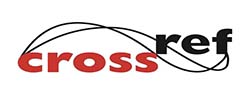Author: Gergana Desheva, Evgenia Valchinova, Radoslav Chipilski, Katya Uzundzhalieva, Bozhidar Kyosev
Keyword: wild einkorn, anatomy of leaf, morphophysiological characters of leaves, correlation, PC-analysis.
Abstract: The aim of this study was to assess the degree of variation between 32 accessions of wild einkorn (Triticum boeoticum Boiss.) on the basic morphophysiological and anatomical characteristics of the flag and subflag leaves. The experiment was carried out during 2016 – 2017 growing seasons in the randomized block design in four replications and 10 m2 plot size. Significant differences among the accessions for all studied characters were recorded. The epidermis of the studied 32 accessions was constructed by strongly elongated prosenhyme cells with flexous walls. The stomatas were with oval to elliptic shape, about 1.5 times longer than wide. The most variable character was the total chlorophyll content. Accessions with numbers B6E0416, B6E0413, B6E0398 and B6E0392 had the largest amount of chlorophyll pigments exceeding the average standard almost twice. The water-to-biomass ratio in the flag leaf was the greatest for B6E0378, B6E0389 and B6E0401, while for the subflag leaves B6E0379, B6E0401 and B6E0385 were with the highest amount of water per unit of dry mass. The correlation between intensity of transpiration and the fresh and dry mass of leaves were slightly negative for flag leaf and slightly positive for subflag leaf. The water content of the subflag leaf had a stronger influence on the morphophysiological parameters compared to the water content of the flag leaf. PC-analysis grouped accessions according to similarity on the basis of investigated morphophysiological and physiological characters in two components in the factor plane.
| Total View: 1746 | Downloads: 695 | Page No: 1391-1400 |
Cite this Article:
MLA
Gergana Desheva, Evgenia Valchinova, Radoslav Chipilski, Katya Uzundzhalieva, Bozhidar Kyosev, P.(2018).Morphophyziological and Anatomical Characteristics of Leaves in Accessions of Wild Einkorn (Triticum boeoticum Boiss.). International Journal of Environment Agriculture and Biotechnology(ISSN: 2456-1878).3(4), 1391-1400.10.22161/ijeab/3.4.34
Gergana Desheva, Evgenia Valchinova, Radoslav Chipilski, Katya Uzundzhalieva, Bozhidar Kyosev, P.(2018).Morphophyziological and Anatomical Characteristics of Leaves in Accessions of Wild Einkorn (Triticum boeoticum Boiss.). International Journal of Environment Agriculture and Biotechnology(ISSN: 2456-1878).3(4), pp.1391-1400.
Gergana Desheva, Evgenia Valchinova, Radoslav Chipilski, Katya Uzundzhalieva, Bozhidar Kyosev. 2018."Morphophyziological and Anatomical Characteristics of Leaves in Accessions of Wild Einkorn (Triticum boeoticum Boiss.)". International Journal of Environment Agriculture and Biotechnology(ISSN: 2456-1878).3(4):1391-1400.Doi:10.22161/ijeab/3.4.34
Gergana Desheva, Evgenia Valchinova, Radoslav Chipilski, Katya Uzundzhalieva, Bozhidar Kyosev."Morphophyziological and Anatomical Characteristics of Leaves in Accessions of Wild Einkorn (Triticum boeoticum Boiss.)", International Journal of Environment Agriculture and Biotechnology,vol.3,no. 4, pp.1391-1400,2018.
@article { gerganadesheva2018morphophyziological,
title={Morphophyziological and Anatomical Characteristics of Leaves in Accessions of Wild Einkorn (Triticum boeoticum Boiss.)},
author={Gergana Desheva, Evgenia Valchinova, Radoslav Chipilski, Katya Uzundzhalieva, Bozhidar Kyosev , R},
journal={International Journal of Environment Agriculture and Biotechnology},
volume={3},
year= {2018} ,
}
























